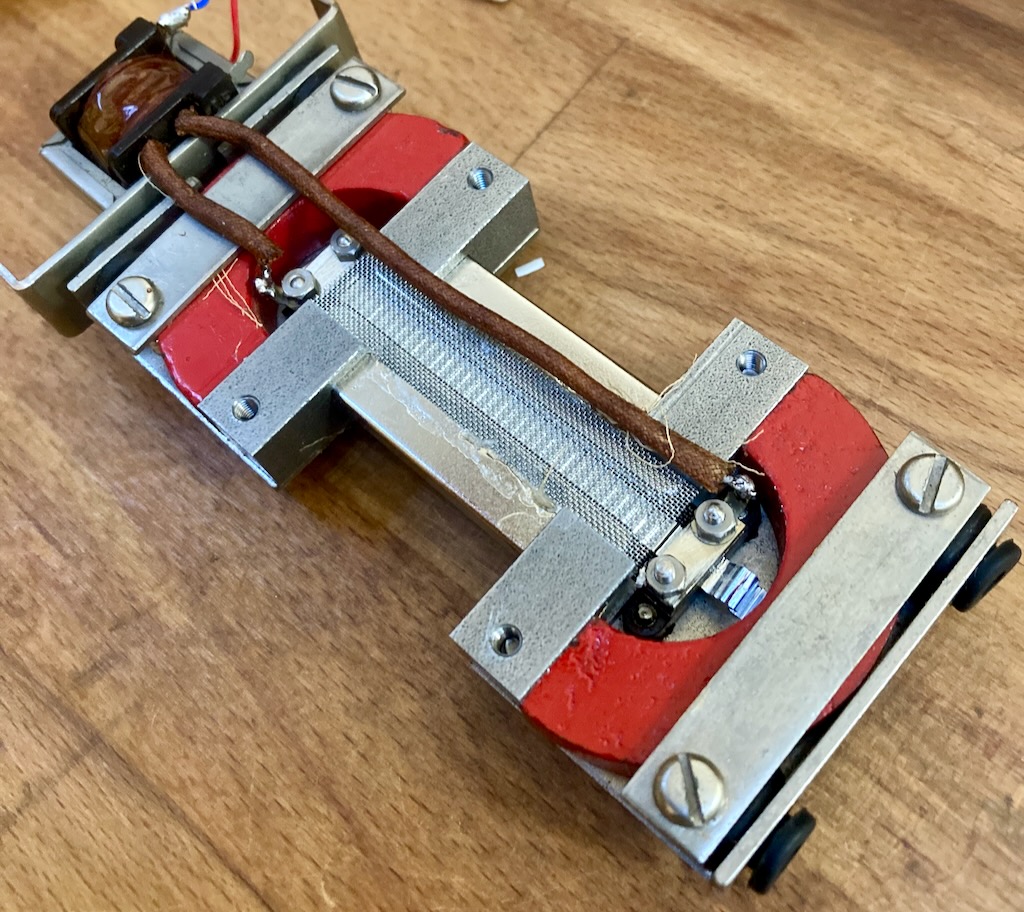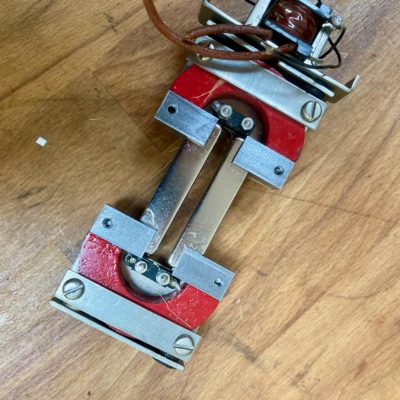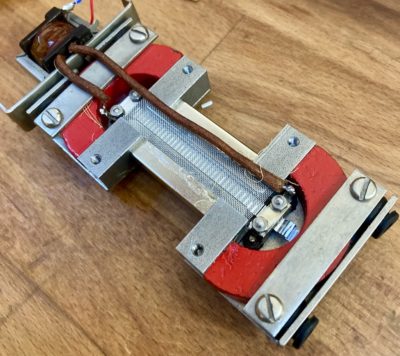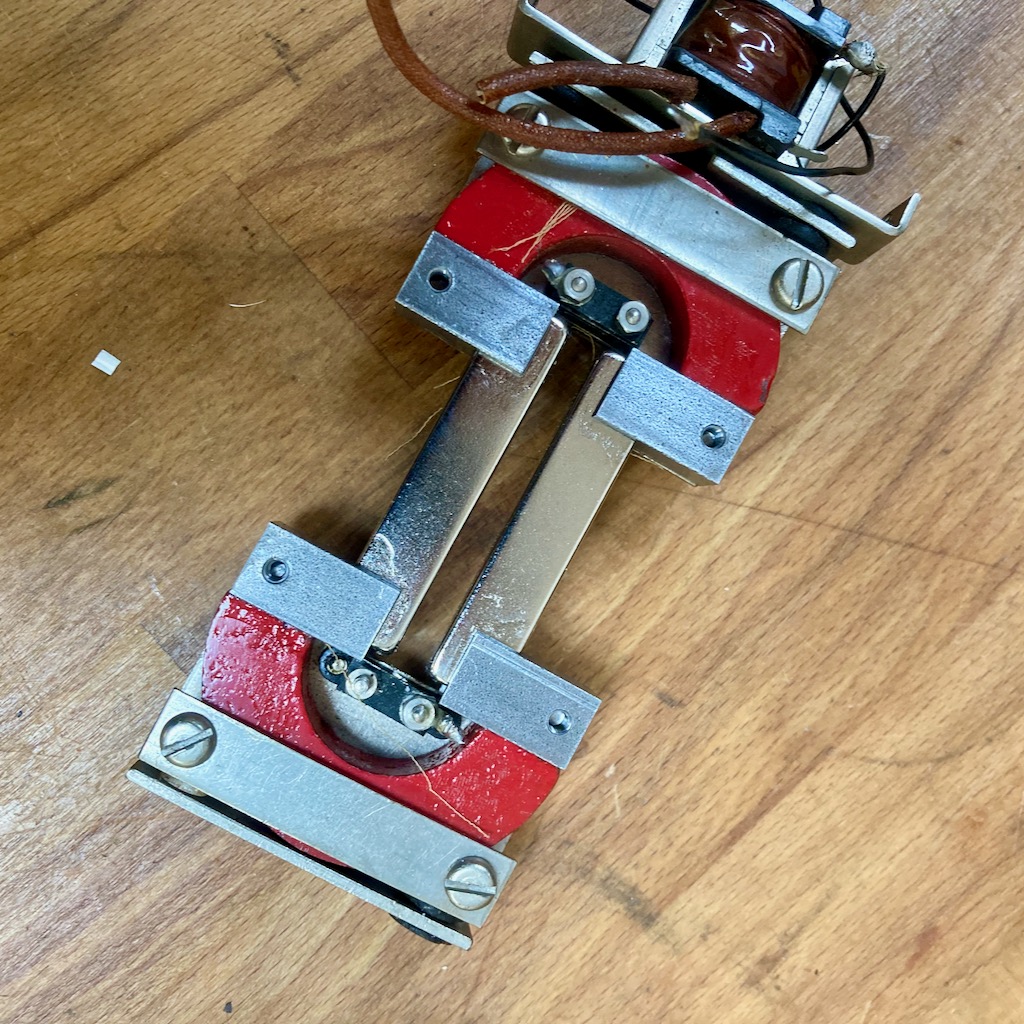Lustraphone VR53 magnets (again)

The problem:
The Lustraphone VR53 was first made in the 1950s and would have been used with either an old reel to reel tape recorder or valve PA system, with lots of lovely background hiss.
The V53 has two (probably) ferrite horseshoe magnets and some rather hefty steel pole pieces, The result is a weak field which conspire with the long ribbon to give a weak, flabby sounding signal. It is a very dark sounding mic even for a 50s ribbon, and maybe for some recordings this is the sound that you need! But for most users the signal to noise and output are too low for our expectations of modern recordings, and the lack of top end limits its use to special effects duties or spiky sounds where you really want to kill the top.
However these microphones are very stylish and it would be nice if they sounded as good as they looked. Fortunately, the VR53 is ripe for modification because…
(a) it is not a very good microphone, so there is a lot of scope for improvement,
(b) it is (still) relatively inexpensive, probable because of (a) and…
(c) it is common so we don’t need to worry about hacking a rare antique. I would not do this kind of thing to an old RCA 44bx
The limiting factor here is really the weak magnetic field. If the field can be increased then the output level and signal to noise will improve and the bottom end response will be tamed a little, giving a less flabby sound. I have posted previously about machining the old pole pieces to make space for some booster magnets. That worked well but milling the old steel parts proved to be very time consuming and so expensive to do, and sometimes the old parts would fall apart. I don’t really like machining ferrous materials here in our workshop because the combination of iron filings and strong magnets can cause trouble later.
Now we have a simpler magnet upgrade which works just as well, or better but is much quicker to fit. Adam at Extinct Audio and I designed some small steel holders to replace the old pole pieces. These are screwed in place and then new Neodymium magnets simply slide into these holders and the magnet upgrade job is done. I measured 6500 gauss in the ribbon gap which is a hefty improvement and is comparable in field strength to something like the Coles 4038. Then it just needs a new ribbon and putting back together – I generally replace any perished rubber parts at this stage.
These microphones were available in different impedances but the transformers were well made. If the microphone has the 200 or 600 ohm transformer then it can be left in place and the microphone will work nicely with modern equipment, although we can squeeze another 2 or 3 dB out with a new transformer. The result is a substantially higher output and signal to noise performance, and more controlled bass response which lets the top end shine through. The new ribbon also helps with the highs.
For comparison, here are two short recordings of acoustic guitar made with the stock microphone with old magnets and ribbon
And here is the modified version at the same gain settings. Be warned this is much dB louder and you might want to turn your headphones down now!


